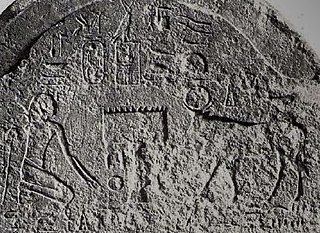
Cambyses II was the second King of Kings of the Achaemenid Empire from 530 to 522 BC. He was the son and successor of Cyrus the Great and his mother was Cassandane.

Darius I, commonly known as Darius the Great, was the third Persian King of Kings of the Achaemenid Empire, reigning from 522 BCE until his death in 486 BCE. He ruled the empire at its peak, when it included much of West Asia, parts of the Caucasus, parts of the Balkans, most of the Black Sea coastal regions, Central Asia, as far as the Indus Valley in the far east and portions of north and northeast Africa including Egypt (Mudrâya), eastern Libya, and coastal Sudan.

Darius II, also called Darius II Nothus or Darius II Ochus, was King of Kings of the Achaemenid Empire from 423 BC to 405 or 404 BC.

Darius III was the last Achaemenid King of Kings of Persia, reigning from 336 BC to his death in 330 BC.

Bardiya, also named as Tanyoxarces by Ctesias, was a son of Cyrus the Great and the younger brother of Cambyses II, both Persian kings. There are sharply divided views on his life. Bardiya either ruled the Achaemenid Empire for a few months in 522 BC, or was impersonated by a magus called Gaumāta, until he was toppled by Darius the Great.

Persis, better known in English as Persia, or Persia proper, is the Fars region, located to the southwest of the modern Iran, now a province. The Persians are thought to have initially migrated either from Central Asia or, more probably, from the north through the Caucasus. They would then have migrated to the current region of Persis in the early 1st millennium BC. The country name Persia was derived directly from the Old Persian Parsa.

Naqsh-e Rostam is an ancient archeological site and necropolis located about 12 km northwest of Persepolis, in Fars Province, Iran. A collection of ancient Iranian rock reliefs are cut into the face of the mountain and the mountain contains the final resting place of four Achaemenid kings notably king Darius the Great and his son, Xerxes. This site is of great significance to the history of Iran and to Iranians, as it contains various archeological sites carved into the rock wall through time for more than a millennium from the Elamites and Achaemenids to Sassanians. It lies a few hundred meters from Naqsh-e Rajab, with a further four Sassanid rock reliefs, three celebrating kings and one a high priest.
Pacorus is a male given name of Middle Iranian origin notably born by Parthians.
Ariobarzanes is a male given name.

Ariobarzanes, was an Achaemenid prince, satrap and a Persian military commander who led an Ambush of the Persian army at the Battle of the Persian Gate against Macedonian King Alexander the Great in the winter of 330 BC.

Media is a region of north-western Iran, best known for having been the political and cultural base of the Medes. During the Achaemenid period, it comprised present-day Azarbaijan, Iranian Kurdistan and western Tabaristan. As a satrapy under Achaemenid rule, it would eventually encompass a wider region, stretching to southern Dagestan in the north. However, after the wars of Alexander the Great, the northern parts were separated due to the Partition of Babylon and became known as Atropatene, while the remaining region became known as Lesser Media.

The Battle of the Persian Gate was a military conflict between a Persian force, commanded by the satrap of Persis, Ariobarzanes, and the invading Hellenic League, commanded by Alexander the Great. In the winter of 330 BC, Ariobarzanes led a last stand of the outnumbered Persian forces at the Persian Gates near Persepolis, holding back the Macedonian army for a month. Alexander eventually found a path to the rear of the Persians from the captured prisoners of war or a local shepherd, defeating the Persians and capturing Persepolis.

Hystaspes or Guštāsp, was a Persian satrap of Bactria and Persis. He was the father of Darius I, emperor of the Achaemenid Empire, and Artabanus, who was a trusted advisor to both his brother Darius as well as Darius's son and successor, Xerxes I.

The Achaemenid Empire, also called the First Persian Empire, was an ancient Iranian empire that was based in Western Asia and founded by Cyrus the Great in 550 BC. It reached its greatest extent under Xerxes I, who conquered most of northern and central ancient Greece. At its greatest territorial extent, the Achaemenid Empire stretched from the Balkans and Eastern Europe in the west to the Indus Valley in the east. The empire was larger than any previous empire in history, spanning a total of 5.5 million square kilometers.

Darayan II was king of Persis in the 1st century BC, a vassal state of the Parthian Empire. He was succeeded by his son Ardakhshir II.

Frataraka is an ancient Persian title, interpreted variously as “leader, governor, forerunner”. It is an epithet or title of a series of rulers in Persis from 3rd to mid 2nd century BC, or alternatively between 295 and 220 BC, at the time of the Seleucid Empire, prior to the Parthian conquest of West Asia and Iran. Studies of frataraka coins are important to historians of this period.

Darayan I was the first king of Persis, most likely invested with kingship of the region by his overlord, the Parthian monarch Phraates II sometime after 132 BC.
Revolt of Babylon may refer to:














